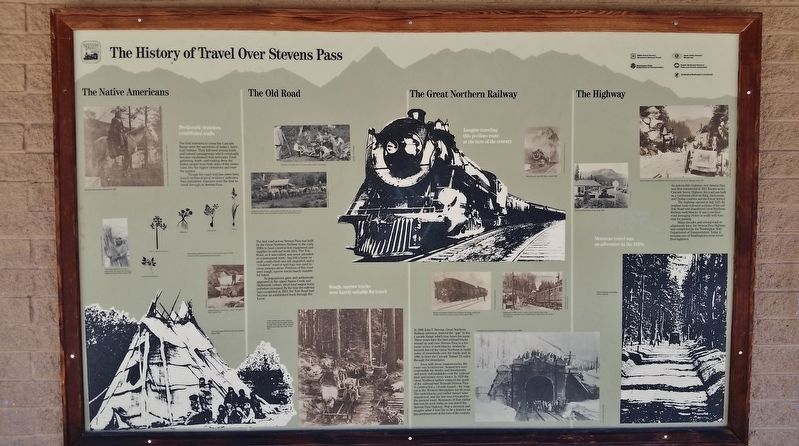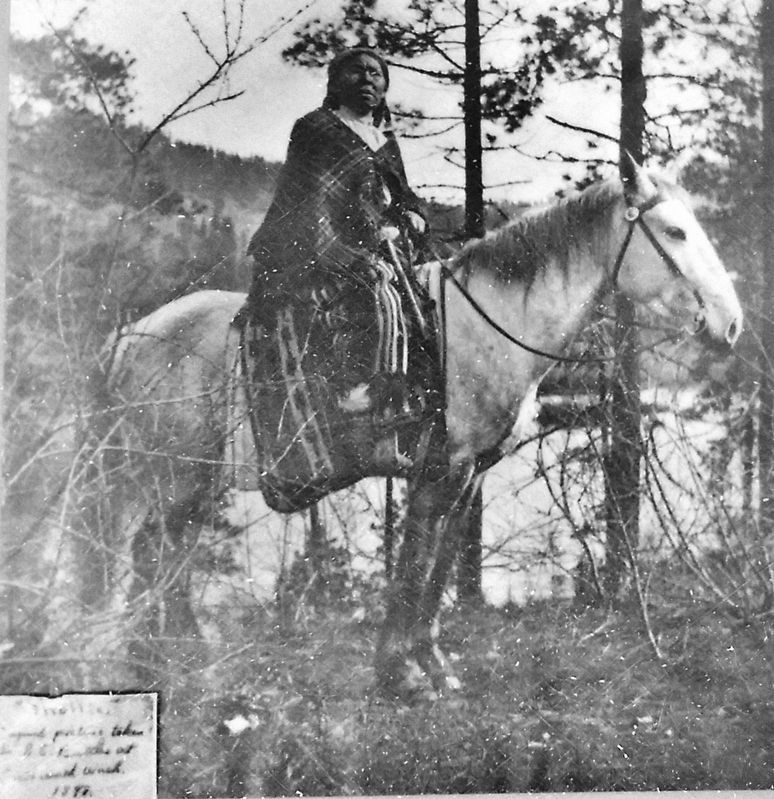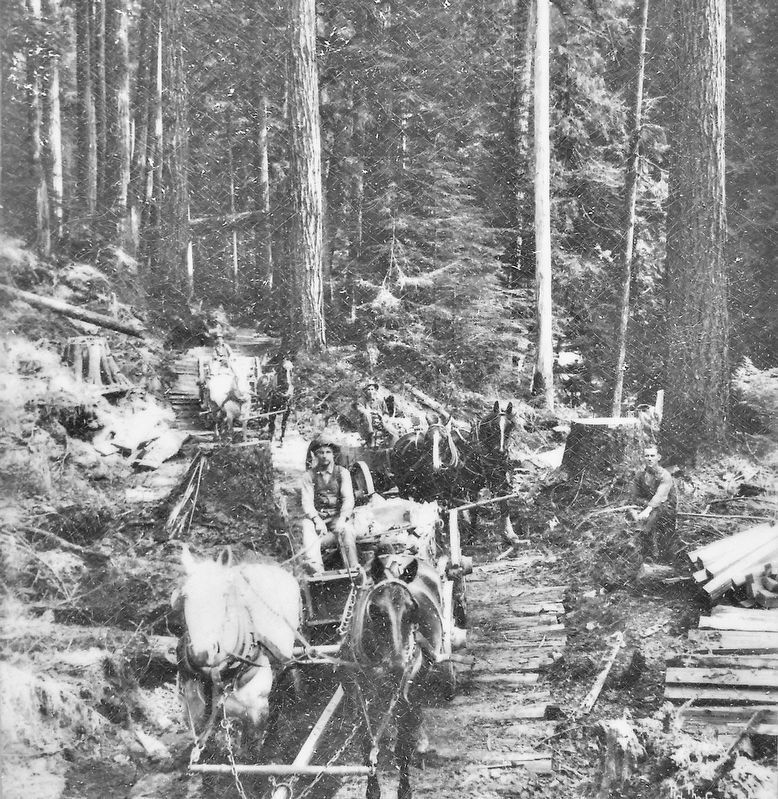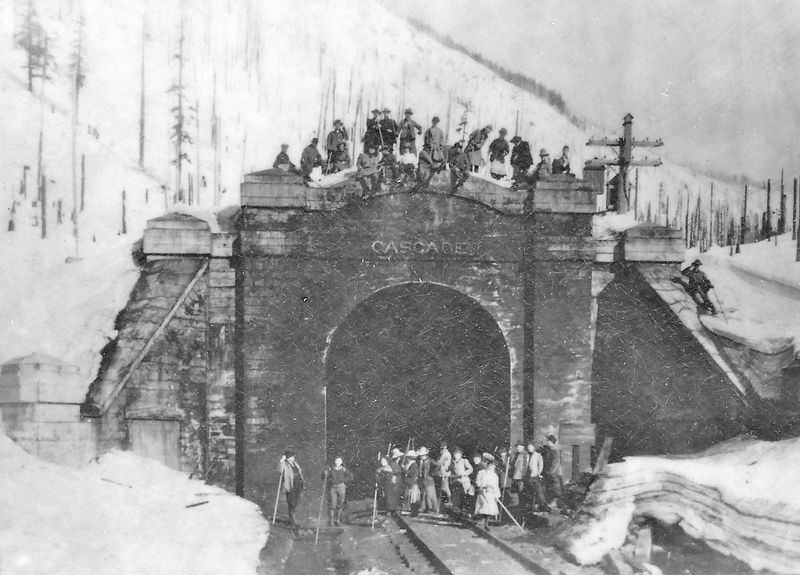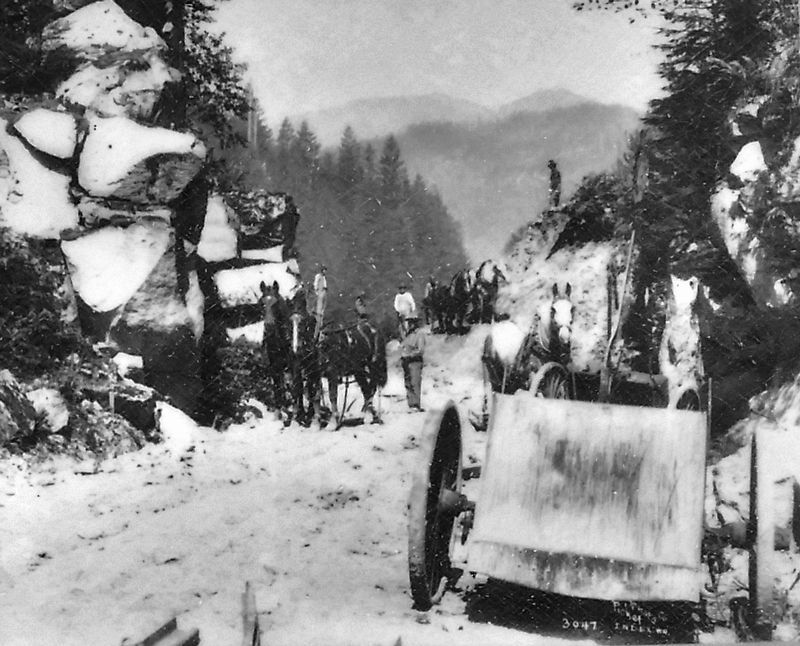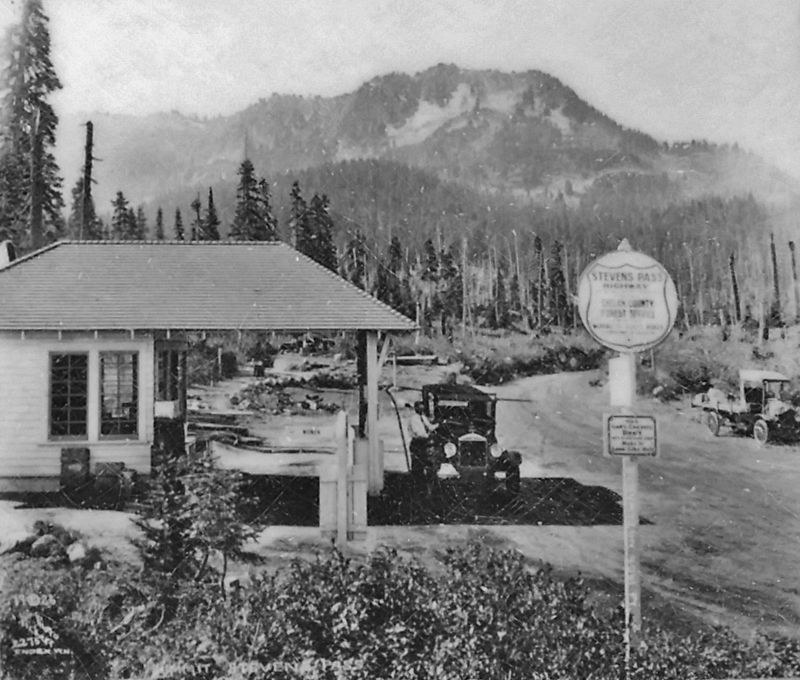Near Leavenworth in Chelan County, Washington — The American West (Northwest)
The History of Travel Over Stevens Pass
The Native Americans
Prehistoric travelers established trails.
The first travelers to cross the Cascade Range were the ancestors of today's American Indians. They followed animal trails and natural passageways which eventually became established trail networks. Food gathering, trade, and visiting drew the Indian people from both sides of the mountains into the higher elevations and over the passes.
Though the exact trail has never been found, archaeological evidence indicates that prehistoric travelers were the first to break through at Stevens Pass.
The Old Road
Rough, narrow tracks were barely suitable for travel.
The first road across Stevens Pass was built by the Great Northern Railway in the early 1890s to haul construction equipment and supplies to railroad work sites. The Tote Road, as it was called, was never intended as a permanent route. Any hill a horse or mule could climb was left ungraded, and a "corduroy" road of split logs was used to cross swampy areas. Portions of this road were rough, narrow tracks barely suitable for travel.
As populations grew and settlements appeared in the upper Nason Creek and Skykomish valleys, short-haul wagon transportation increased. By the time the railroad was completed in 1893, the Tote Road had become an established track through the forest.
The Great Northern Railway
Imagine traveling this perilous route at the turn of the century.
In 1890 John F. Stevens, Great Northern Railway surveyor, noticed the "gap" in the Cascade Range which now bears his name. Three years later the first railroad tracks wound up and over Stevens Pass in a tortuous series of switchbacks. Avalanche hazards forced the Great Northern to build miles of snowsheds over the tracks and, in 1900, to bore the Cascade Tunnel 2.6 miles through the mountains.
Even with these improvements, the route was treacherous. Avalanches were responsible for deaths and derailments, and snow and landslides cost the railroad time and money every winter. In 1929 the Great Northern further reduced the grade of the railroad bed. Beneath Stevens Pass it constructed a 7.8-mile tunnel — the longest in the Western Hemisphere for 60 years. The switchbacks and earlier tunnel were abandoned, and the line was relocated to the present route. Remnants of that earlier line can be seen today as you travel the Stevens Pass Highway. Stop a moment and imagine what it was like to be a traveler on this perilous route at the turn of the century.
The Highway
Motorcar travel was an adventure in the 1920s.
An automobile highway over Stevens Pass was first envisioned in 1911. Known as the Cascade
Scenic Highway, this road was built as a combined effort by King, Snohomish, and Chelan counties and the Forest Service.
The highway opened in July 1925. Its original route followed sections of the old Tote Road and abandoned Great Northern Railway switchbacks. It was a one-lane road averaging 14 feet in width with turnouts for passing.
Many decades and several road realignments later, the Stevens Pass Highway was completed by the Washington State Department of Transportation. Today it remains one of Washington's most scenic thoroughfares.
(photo captions)
• Tule reeds, gathered and dried, were made into mats for covering lodges and floors. Photo about 1900.
• Some plants gathered by Native Americans for use or trade (after Jeanne R. Janish in Vascular Plants of the Pacific Northwest): mountain huckleberry; tule or softstem bulrush; bitterroot; biscuitroot; camas
• Indian fishing in Tumwater Canyon, Wenatchee River, about 1910.
• Tule mat house of Wenatchee area Indians, about 1890.
• Heading east, near Mt. Index, about 1930
• Scenic Highway near Berne, east of summit.
Topics. This historical marker is listed in these topic lists: Native Americans • Railroads & Streetcars • Roads & Vehicles.
Location. 47° 45.99′ N, 120° 47.609′
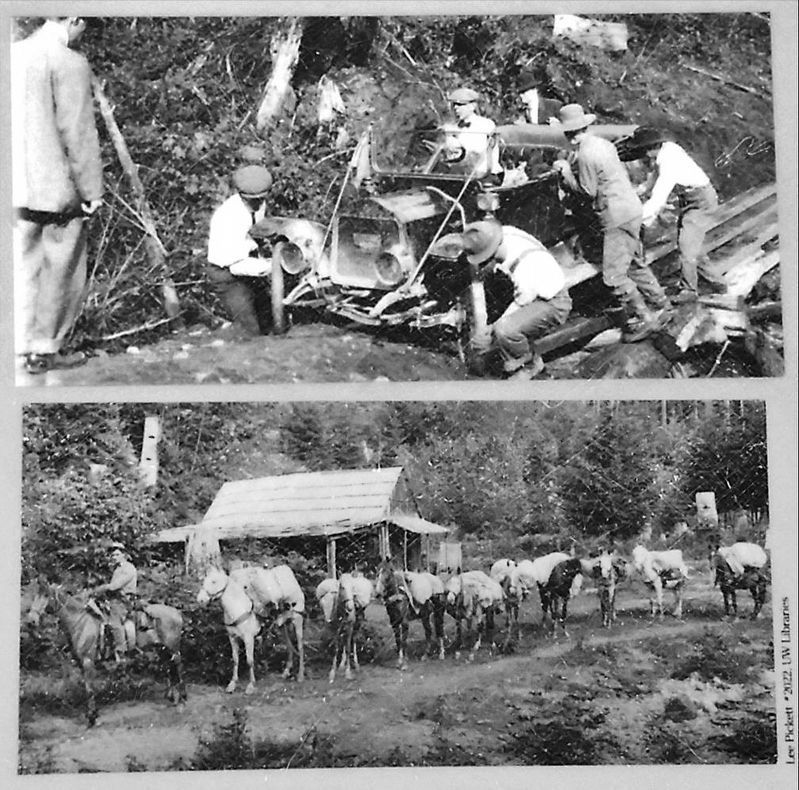
Photographed By Lee Pickett #1411 & #2022, UW Libraries
3. Marker detail: The Old Road
(top) Traveling with difficulties on early county roads (near Index).
(bottom) Government pack trains used early trails like this one, and parts of the Tote Road for access to federal lands in the Stevens Pass area.
(bottom) Government pack trains used early trails like this one, and parts of the Tote Road for access to federal lands in the Stevens Pass area.
Other nearby markers. At least 1 other marker is within 14 miles of this marker, measured as the crow flies. Earle Little - Hermod Bakke Sr. - Magnus Bakke (approx. 13.3 miles away).
Also see . . . Stevens Pass (Wikipedia). Hubert C. Ward, exploring the area for the Northern Pacific Railway in 1872, heard from some Native Americans that there was a low pass at the head of Nason Creek. Albert Bowman Rogers, of the Great Northern Railway, learned more from Native Americans in 1887. In 1890, John Frank Stevens conducted a thorough survey for the Great Northern, located the pass, and determined it to be the best suited for a railway crossing of the North Cascades. (Submitted on September 17, 2020, by Cosmos Mariner of Cape Canaveral, Florida.)
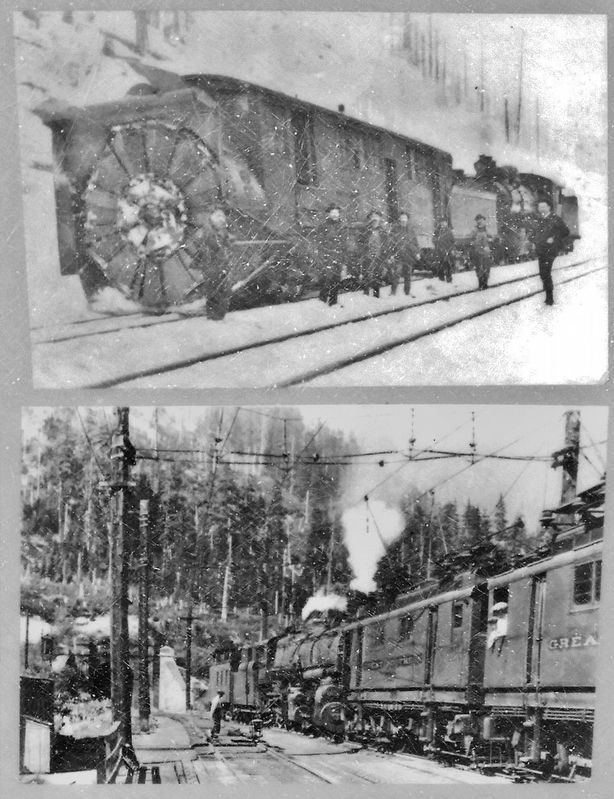
5. Marker detail: Early 20th Century Trains
(top) Rotary snow plows helped trains through the heavy snows and avalanches of the Cascade winters. Photo about 1910. [Courtesy Burlington Northern Railroad]
(bottom) Beginning in 1909, electric engines were used to take trains through the tunnel because of trapped fumes from the steam locomotives. [Photo by James A. Turner, 1925, east portal Old Cascade Tunnel, Warren W. Wing Collection]
(bottom) Beginning in 1909, electric engines were used to take trains through the tunnel because of trapped fumes from the steam locomotives. [Photo by James A. Turner, 1925, east portal Old Cascade Tunnel, Warren W. Wing Collection]
Credits. This page was last revised on September 17, 2020. It was originally submitted on September 14, 2020, by Cosmos Mariner of Cape Canaveral, Florida. This page has been viewed 1,302 times since then and 169 times this year. Photos: 1, 2, 3, 4, 5, 6, 7, 8. submitted on September 17, 2020, by Cosmos Mariner of Cape Canaveral, Florida.
